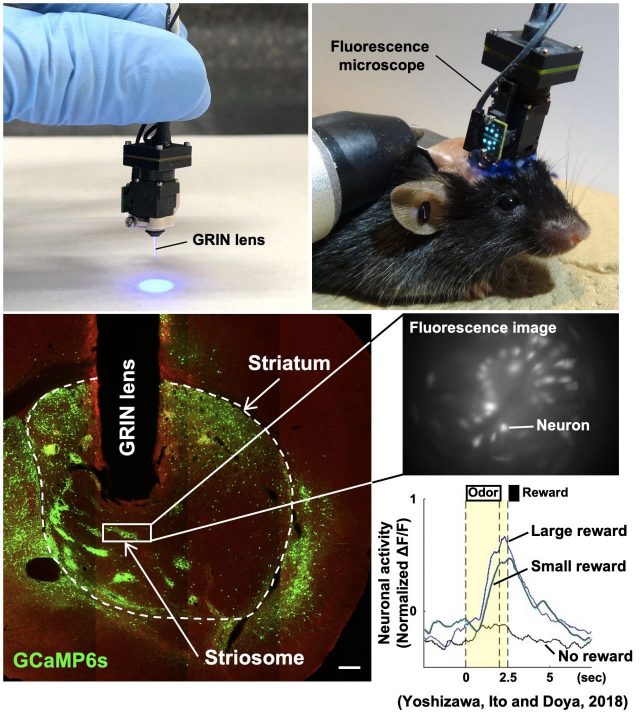Outline
Individuals can learn new behaviors in unfamiliar environments by exploring and memorizing sensory cues or actions that lead to good or bad outcomes. For instance, if you touch a hot oven, you very quickly learn not to do it again. Learning by trial-and-error, which can yield positive or negative consequences, is known as reinforcement learning.
Neuroscientists know that a part of the forebrain called basal ganglia plays an important role in reinforcement learning. A major part of the basal ganglia, the striatum, is composed of a patchwork of two types of tissue: the striosome and the matrix. Currently, I am trying to clarify the role of striosome/matrix on reinforcement learning by using electrophysiological recording, calcium imaging and optogenetics.

